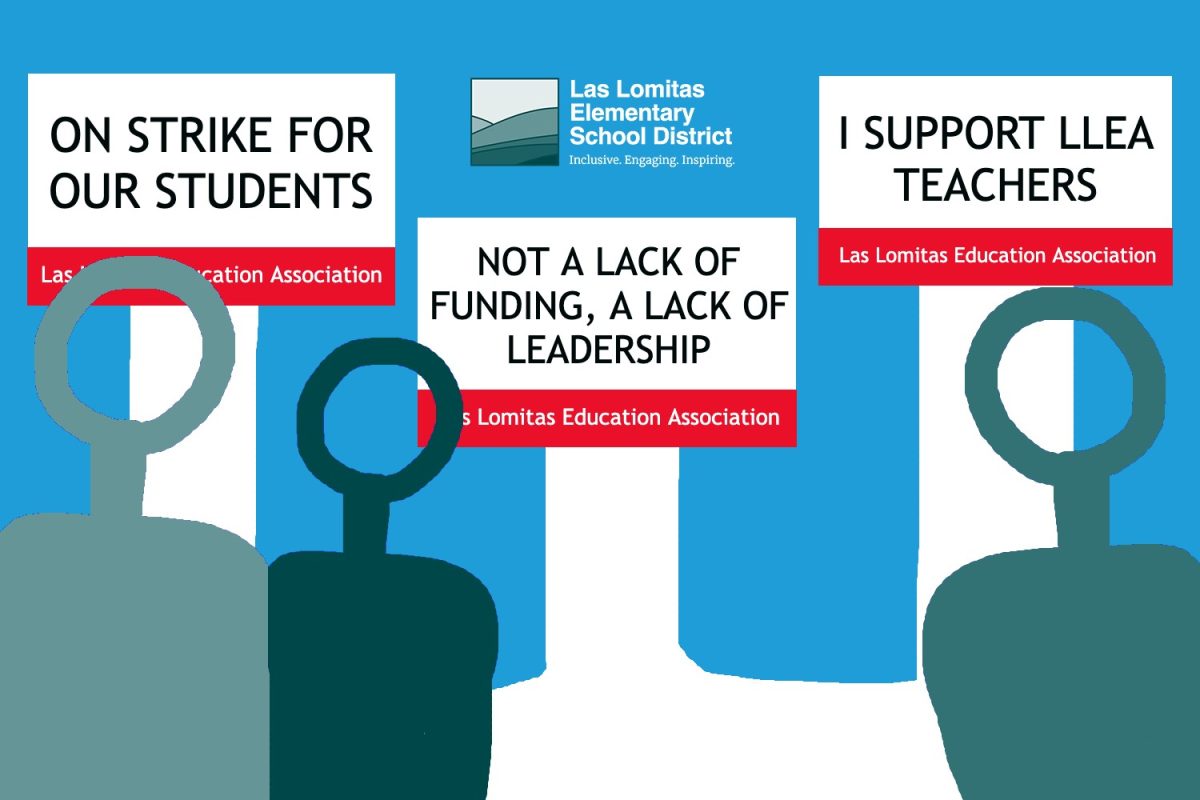Ninety-two members of the Las Lomitas Education Association (LLEA), along with numerous community members, picketed for three days in response to difficulties resolving pay negotiations with the Las Lomitas Elementary School District (LLESD).
LLEA, the teachers’ union, went on strike on Oct. 23 after providing a few days’ warning and receiving the fact-finding report. They also went door-to-door to garner support during the strike.
“The strike drew attention to the tools teacher associations have to advocate for their compensation and benefits,” said six-year LLESD Superintendent Dr. Beth Polito.
During negotiations, which regarded both the 2023-24 as well as current year teacher pay schedule due to previous delays, LLEA requested an 8% retroactive pay increase for 2023-24 and a further 8% increase for 2024-25 along with health benefits worth 110% coverage of a Kaiser individual plan beginning in 2025 and removal of the $1,812 per person CalPERS fee. This was in response to the district proposal of a 7% retroactive raise and a further 3% for 2024-25, as well as benefits worth exact coverage of a Kaiser individual plan beginning in 2025. Prior, LLEA had requested a 10% salary increase and full health coverage, while the district had offered a 5% retroactive increase along with $2,000 of additional health benefits.
Teachers had concerns regarding the cost of living in the district, which led to their demands.
“It’s unbelievable that the wealthiest ZIP code in the United States can’t pay us for the professionals we are and keep us in the district,” LLEA Co-President Jennifer Montalvo said in a release.
Atherton is the most expensive city in America. Housing is particularly costly in the area, with a reputation for exclusionary housing practices. LLESD, which is comprised of Las Lomitas Elementary School and La Entrada Middle School, also draws students from Menlo Park and Ladera.
“Negotiations are at a standstill due to the district’s failure to agree to prioritize the retention and recruitment of qualified educators, as soaring housing and health care costs are forcing educators to take second jobs to survive,” Julian Peeples and Gabriella Landeros, members of the California Teachers Association (which LLEA is a subset of), wrote during the strike.
Families in the district largely agree with the necessity of the teachers’ demands.
“I don’t think it was unanimous, but generally the community was in support of the strike. I think the strike was warranted, and it was quite effective since the teachers finally got at least half of their demands met. Parents also finally understood what teachers were going through,” said Prashant Cherpuri, whose child attends school in the district.
Students also understand the importance of labor organizing.
“I definitely support teacher strikes if the basis is about wanting more pay. Teachers are extremely dedicated to their jobs and often are not compensated enough for it,” Carlmont sophomore Shreya Chandrasekar said.
On the other hand, district administration felt that teachers have appropriate pay and benefits, and also had concerns about what it would take to pay teachers more.
“LLESD educators are very well supported in comparison to Bay Area districts. Staff and students are well supported through small class sizes, robust support programs, and competitive salaries,” Polito said.
During the strike, administrators tried to balance support for families while continuing to bargain with teachers.
“It was a little disruptive for the kids to see their teachers outside, shouting slogans and everything, but district admin were as empathetic as they could be,” Cherpuri said. “I thought they did a great job of not alienating the teachers and trying to keep relationships intact. I also feel like their communication was really effective. They were always available, so we never felt like there was a lack of information.”
After receiving notice of the strike, the district sent out a family guide. It included specific information on the upcoming strike and whether schools would be open, as well as an explanation of why the strike was happening.
According to the guide, “For older students, you may want to explain that there are two sides involved in a labor dispute. They both want to reach a fair agreement for teachers and students. Strikes are a legal way for teachers to use their voice to share their concerns with the community.”
Meanwhile, in school, paraeducators and performers were brought to attend to students.
“Teachers want to go back and are extremely heartbroken that the district would rather spend over $100,000 on a magician, subs, security, and an attorney rather than invest in our children’s education. We are frustrated with the amount of blatant disregard towards us and our kids,” a union statement said.
LLESD jumped back into motion on Monday, Oct. 28, after a tentative agreement on a 16% raise over three years and full health coverage for teachers.
“The board and staff associations will consider ratifying the three-year agreement. I hope that we will be able to agree and start focusing our attention on building our program for next year and rebuilding relationships,” Polito said.
Polito announced, a few days prior to the strike, that she plans to retire next August.
“Together, we won for our students and set a precedent for generations to come. We stayed united and showed that our strength is our resolve,” the union said in a statement after the agreement was reached.
Around the same time as the LLEA strike, Southern California Kaiser Permanente workers began a strike for higher wages and more patient prep time. Read more here.












